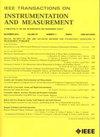Design and Experimental Verification of a 6.25-GHz PLL for Harsh Temperature Conditions in 65-nm CMOS Technology
IF 5.6
2区 工程技术
Q1 ENGINEERING, ELECTRICAL & ELECTRONIC
IEEE Transactions on Instrumentation and Measurement
Pub Date : 2024-10-30
DOI:10.1109/TIM.2024.3488132
引用次数: 0
Abstract
Reliability is an important characteristic of electronic systems, and it could be undermined by several issues. Among these, a wide temperature range represents a threat to the correct operation of electronic systems. Indeed, wide temperature ranges can be experienced in various fields, such as the oil and gas industry, the avionics and automotive fields, or space applications. In these cases, temperatures can reach maximum values up to 160 °C and minimum values down to -40 °C. In addition, in these fields, the ever-improving sensors’ technology is pushing for increasingly higher data rates to the control units. This implies the use of high-speed point-to-point connections, which usually exploit phase-locked loops (PLL) to synchronize the communication. These PLLs should then be able to operate in harsh environments and the gigahertz range. In this article, we present the design and the experimental verification of a 6.25-GHz PLL for harsh temperature conditions from -40 °C up to 160 °C prototyped in a standard 65-nm CMOS technology. We describe the transistor-level design, and we discuss the setups for all the performed measures. The proposed PLL shows a limited performance dependence on temperature variations, which can be compensated further thanks to a tunable bandwidth. Moreover, it achieves fast locking with low area, low power, and a phase noise below −98 dBc/Hz at 1 MHz.采用 65-nm CMOS 技术设计和实验验证适用于恶劣温度条件的 6.25-GHz PLL
可靠性是电子系统的一个重要特征,它可能会受到一些问题的影响。其中,较宽的温度范围对电子系统的正常运行构成威胁。事实上,在石油和天然气工业、航空电子设备和汽车领域或太空应用等不同领域,都会遇到较大的温度范围。在这些情况下,最高温度可达 160 °C,最低温度可低至 -40 °C。此外,在这些领域中,传感器技术的不断改进要求控制单元的数据传输速率越来越高。这意味着需要使用高速点对点连接,通常利用锁相环(PLL)来实现通信同步。这些锁相环应能在恶劣环境和千兆赫范围内工作。在本文中,我们介绍了一种 6.25-GHz PLL 的设计和实验验证,该 PLL 适用于 -40 °C 至 160 °C 的恶劣温度条件,采用标准 65-nm CMOS 技术制作原型。我们介绍了晶体管级设计,并讨论了所有执行措施的设置。所提出的 PLL 显示出对温度变化的有限性能依赖性,这可以通过可调带宽进一步补偿。此外,它还能以低面积、低功耗实现快速锁定,在 1 MHz 时相位噪声低于 -98 dBc/Hz。
本文章由计算机程序翻译,如有差异,请以英文原文为准。
求助全文
约1分钟内获得全文
求助全文
来源期刊

IEEE Transactions on Instrumentation and Measurement
工程技术-工程:电子与电气
CiteScore
9.00
自引率
23.20%
发文量
1294
审稿时长
3.9 months
期刊介绍:
Papers are sought that address innovative solutions to the development and use of electrical and electronic instruments and equipment to measure, monitor and/or record physical phenomena for the purpose of advancing measurement science, methods, functionality and applications. The scope of these papers may encompass: (1) theory, methodology, and practice of measurement; (2) design, development and evaluation of instrumentation and measurement systems and components used in generating, acquiring, conditioning and processing signals; (3) analysis, representation, display, and preservation of the information obtained from a set of measurements; and (4) scientific and technical support to establishment and maintenance of technical standards in the field of Instrumentation and Measurement.
 求助内容:
求助内容: 应助结果提醒方式:
应助结果提醒方式:


